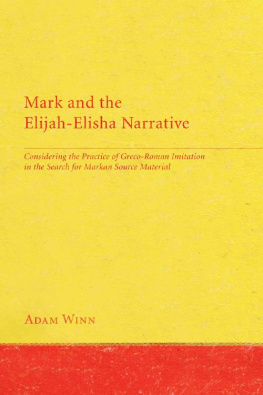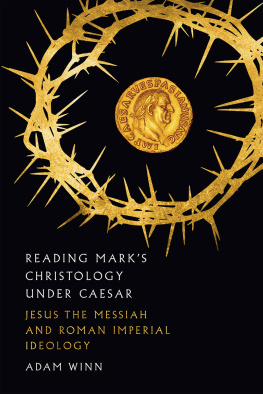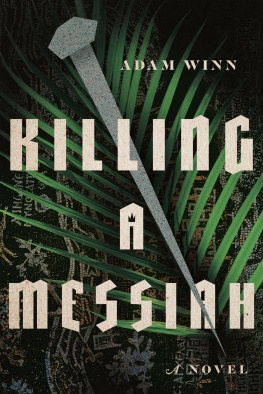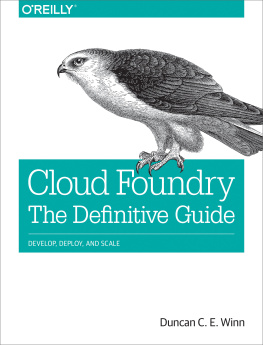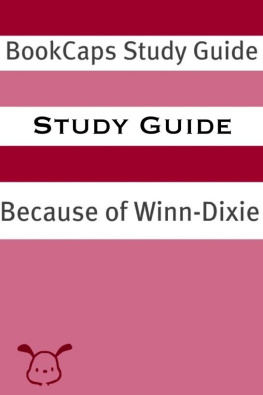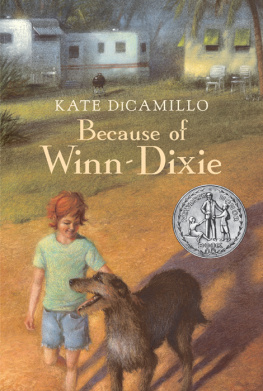We offer to read an annotation, description, summary or preface (depends on what the author of the book "Mark and the Elijah-Elisha Narrative: Considering the Practice of Greco-Roman Imitation in the Search for Markan Source Material" wrote himself). If you haven't found the necessary information about the book — write in the comments, we will try to find it.
Print Length: 150 pagesPage Numbers Source ISBN: 1608992012Publisher: Pickwick Publications, an Imprint of Wipf and Stock Publishers (September 10, 2015)Publication Date: September 10, 2015In this monograph, Adam Winn proposes that the ancient Greco-Roman literary practice of imitation can and should be used when considering literary relationships between biblical texts. After identifying the imitative techniques found in Virgils Aeneid, Winn uses those techniques as a window into Marks use of the Elijah-Elisha narrative of 1 and 2 Kings. Through careful comparisons between numerous pericopes of both respective narratives, Winn argues that the Markan evangelist has, at many points, clearly and creatively imitated the Elijah-Elisha narrative and has relied on this narrative as a primary source. ------------Since 1971 when Raymond Brown identified the Elisha narrative as a precedent for Gospel composition, the Elijah-Elisha narrative has slowly been coming into focus as a literary model for Mark, and now, in the work of Adam Winn, the detail of that insight is coming into full view. Winn reviews research, applies literary criticism, and weighs the data meticulously. This is the moment when the search for Marks literary sources finally begins to reach land.--Thomas L. BrodieDominican Biblical Institute, Limerick, IrelandAdam Winns new book shows how the evangelist Mark drew upon the Elijah-Elisha narratives of 1-2 Kings. Winn works in a field where others have labored, but he has taken care to avoid the pitfalls that have discredited previous attempts. Winn offers readers a fresh examination of Marks composition and the contribution that Israels old and respected Elijah-Elisha narratives exerted on it. Students of Mark (and the other Gospels) must engage Winns work.--Craig A. EvansAcadia Divinity College, Nova Scotia, Canada...this book is a very helpful stsudy for readers (relatively) new to using Greco-Roman mimesis for detecting the Bibles literary sources. For readers seasoned in biblical methods, it will provide several fruitful research leads.--Anne M. OLeary, P.B.V.M., St. Marys University, as reviewed in Catholic Biblical Quarterly, 75/2013About the Author ----------------Adam Winn serves as an adjunct professor at Azusa Pacific University and the University of Mary Hardin-Baylor. He is the author of The Purpose of Marks Gospel: An Early Christian Response to Roman Imperial Propaganda (2008).Review:Since reading Adam Winns first work, The Purpose of Marks Gospel, I have become intrigued with the use of Marks Gospel to counter Roman imperial ideology. Further, as I tested this theory on Mark 5.1-20, I discovered that Mark was employing mimetic rhetoric to counter the encroachment of imperialism into his community. In a 2003 work, Brian Incigneri, briefly mentioned mimesis as a possible motive of Marks imitation, but he classified this as an appeal to emotion (Incigneri, 2003, p53-55). This was not enough, as in my own explorations of Mark, a simple appeal to emotion was not the authors primary purpose in using mimesis, especially as I tested the imperial ideological motif (per Winn) on other sections of Mark. In his second work, based on the completion of a post-doctoral fellowship under the direction of Thomas L. Brodie, Winn moves away from the imperial motif; however, what he does in return is to supply a set of strict criteria to all future interpreters of Mark that I believe can easily be incorporated into his previous monograph.Purpose:Before we progress, let me note that Winns purpose in this book is not an all encompassing survey of mimetic sources that Mark employs, although I will later note my problems with what appears to be a selective selection of sources and the hope that other sources will be considered as additional literary layers. Before the reader leaves the introduction, Winn gives the purpose of this work: to build on the preliminary work already done by Brodie, and explore the possibility that Marks gospel is imitating the Elijah-Elisha narrative (10). This book will also establish criteria for examining the use of imitation, especially in the Gospel of Mark. In my opinion, as a student of mimetic criticism, Winns criteria which he establishes must become the core criteria for any serious mimetic critic, scholar or student.Structure:Winns book is in nine short chapters (the book has about 119 readable pages), giving a succinct examination of his subject. Unlike those of us who are blessed with the gift of verbosity, Winn manages to accomplishes his goals in less time than I fear this review will take. We may divide these chapters into two parts. The first part deals with Mark and Imitation, and after setting the stage, he shows how imitation can be used to show that Mark made use of the Elijah-Elisha narratives to flesh out his story of Jesus. To break down the first part more, and will examine the criteria in a later part of this review, we see Winn reviewing recent additions to Markan studies made through Dennis MacDonald and Wolfgang Roth (chapter 2 and 3 respectively) after first examining an ancient use of imitation as used by Virgil (70 BCE - 17 BCE) as he refigured Homer for his Aeneid. While a mimetic scholar must make use of the material provide for by Winn in his dissection of Virgil, this is a weakness of Winns work here. Virgil is more than 80 years removed from Marks composition and there are those who are closer, in ideology and rhetorical technique than Virgil. However, Winn is able to use Virgils recomposition of Homer to establish his criteria securely.Why is new criteria important? As Winn notes in his introduction, source, form and redaction criticism has left us with too strict a criteria in searching for literary sources (7). Through source criticism, Mark has been established as a priority, therefore, Marks sources are ignored. Form criticism focused on the oral traditions which supposed underlie Marks Gospel, something Brodie has shown to be an unusable hypothesis (although Winn makes the point to note that the search for literary sources does not demean the use of oral sources). Finally, redaction is maintained only with a sort of copy and paste method. These criterion are just too strict to actually get to Marks sources. So, Winn develops new criterion which include: (1) accessibility; (2) structural similarity; (3) shared narrative details; (4) verbal agreement (although he allows that imitation from one language to another may preclude this); and (5), how the use of these criterion are combined to show that imitation has occurred. This criteria is important as Winn moves forward in his examination of both MacDonald and Roths positions on imitation in Mark.Winn is able to make quick work of MacDonalds position in which the latter scholars is sure that Mark used Homer. Here, the use of Winns criteria is important and is developed further to rely on clear and obvious examples (49-50) in preference to those which bare only a minute similarity. This method shows the faultiness of MacDonalds resulting conclusions on Homer/Mark, but what Winn is careful to do is to show respect for MacDonalds methodology, in that it was MacDonald who pioneered the use of mimesis in the study of the New Testament, even if other commentators believe he has gone too far. Winn sets out clearly why MacDonalds examples fail which are generally due to failing the clear and obvious test created by the author himself. He does much the same thing with Roths work, although Roths work provides its own fodder for Winn. Where MacDonald provides for imitation in examining Mark, Roth provides the parallelism between Elijah-Elisha and Mark. Winn, however, suggests that Roth may be wrong on trying to use the narratives to interpret Marks use of the material. While not truly a weakness of Winn (as he noted, interpretation is not the goal of this present volume), the lack of finding purpose in borrowed material will continue to keep imitation from achieving its full potential, in my opinion.In chapters 4 through 9, Winn puts his methodology to the test to reveal the Elijah-Elisha narratives as mimetically similar to several of Marks accounts of Jesus. His strengths here include the structural similarities shared between the two narratives, as well as the initial mention of Elijah in Mark 1.2-3 along with other Elijah-like material in Marks prologue (chapter 1). His one weakness here is the resurrection accounts shared between the two. I would have liked to see Winn focus his time spent on this area in developing other episodes, as this one leaves just a little bit too much lacking for me to be convinced of the sharing of this one episode. That both conclude with a resurrection, albeit one which is unknown and the other which doesnt happen to the protagonist, doesnt really satisfy all of Winns criteria. Yet, even in this weakness, there is still very much something to consider. Perhaps Mark received his abrupt storytelling methods from these narratives. Regardless, the testing of the criteria by the author shows that his methodology is readily applicable to New Testament studies , and I would go one to say that it is one of the most convincing of current critical methodologies, as he pays attention to things often missed by other commentators due to their strict criteria.This is the most important book on mimetic criticism in print today. Winn introduces sound criteria. He tests Brodies hypothesis of a Markan imitation of Elijah-Elisha and moves it from this category to a theory, if not law, but examining episodic events in Mark next to passages from the narratives. He meets his criteria and, because of this, one has to begin to accept his criteria as legitimate, and whats more, that mimetic criticism, pioneered by MacDonald, mitigated through Brodie and fleshed out by Winn, is a valid rhetorical tool to get to the literary sources of the Gospels, if not more of ancient texts. In regards to interpretation, he, as a scholar, leaves this for others to decide. As a student of Adam Winns work, I am more enthused with the course that his work has established in this volume than I was with the first, although they are intimately connected.Much better than Roths book which was very much of a stretch. The parallels that Winn draws between the Gospel of Mark and the Elijah-Elisha narrative are persuasive. The book is well worth reading since most Markan commentaries do not mention the Elijah-Elisha parallels. The book also advances Brodies work in the Elijah-Elisha parallels.

